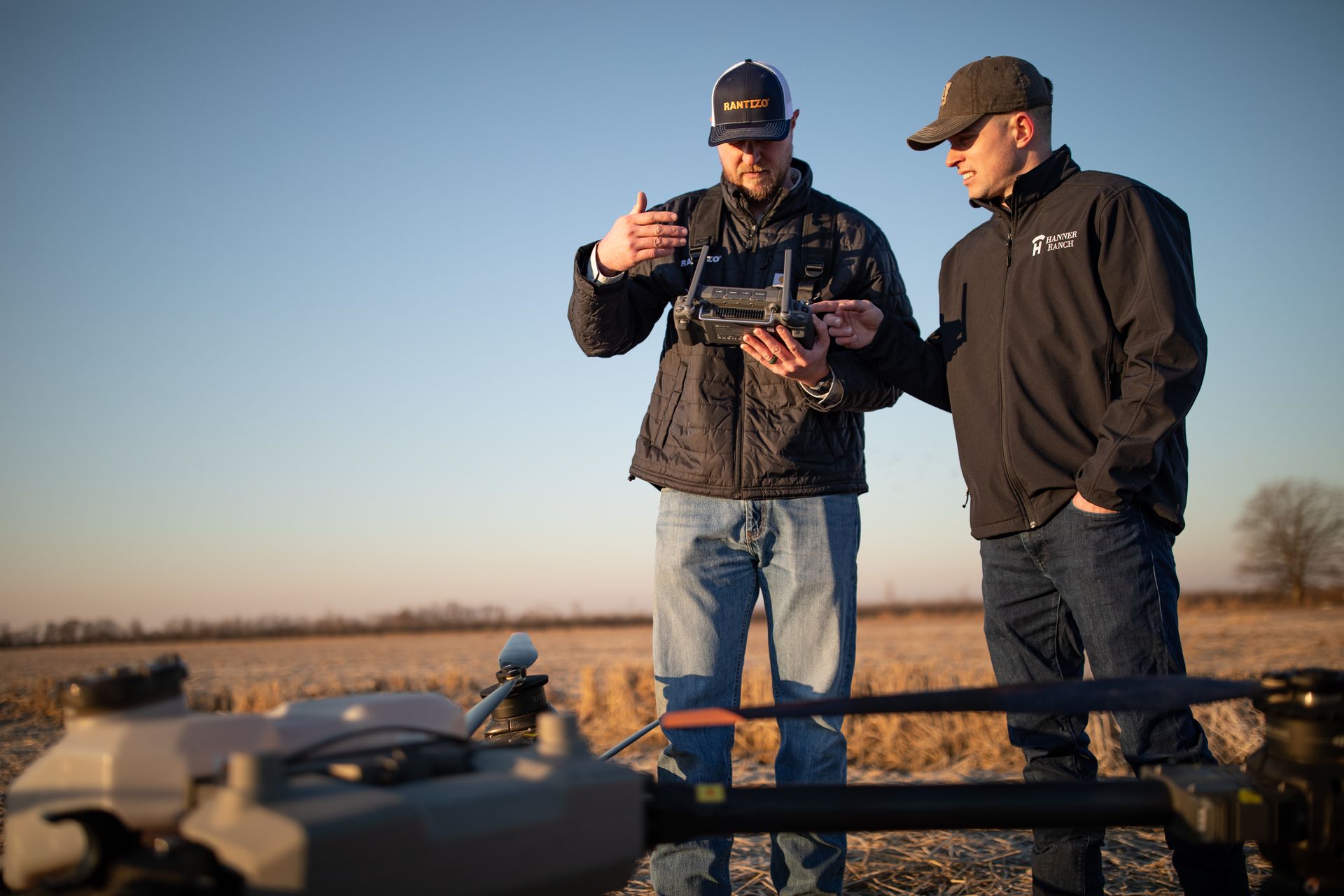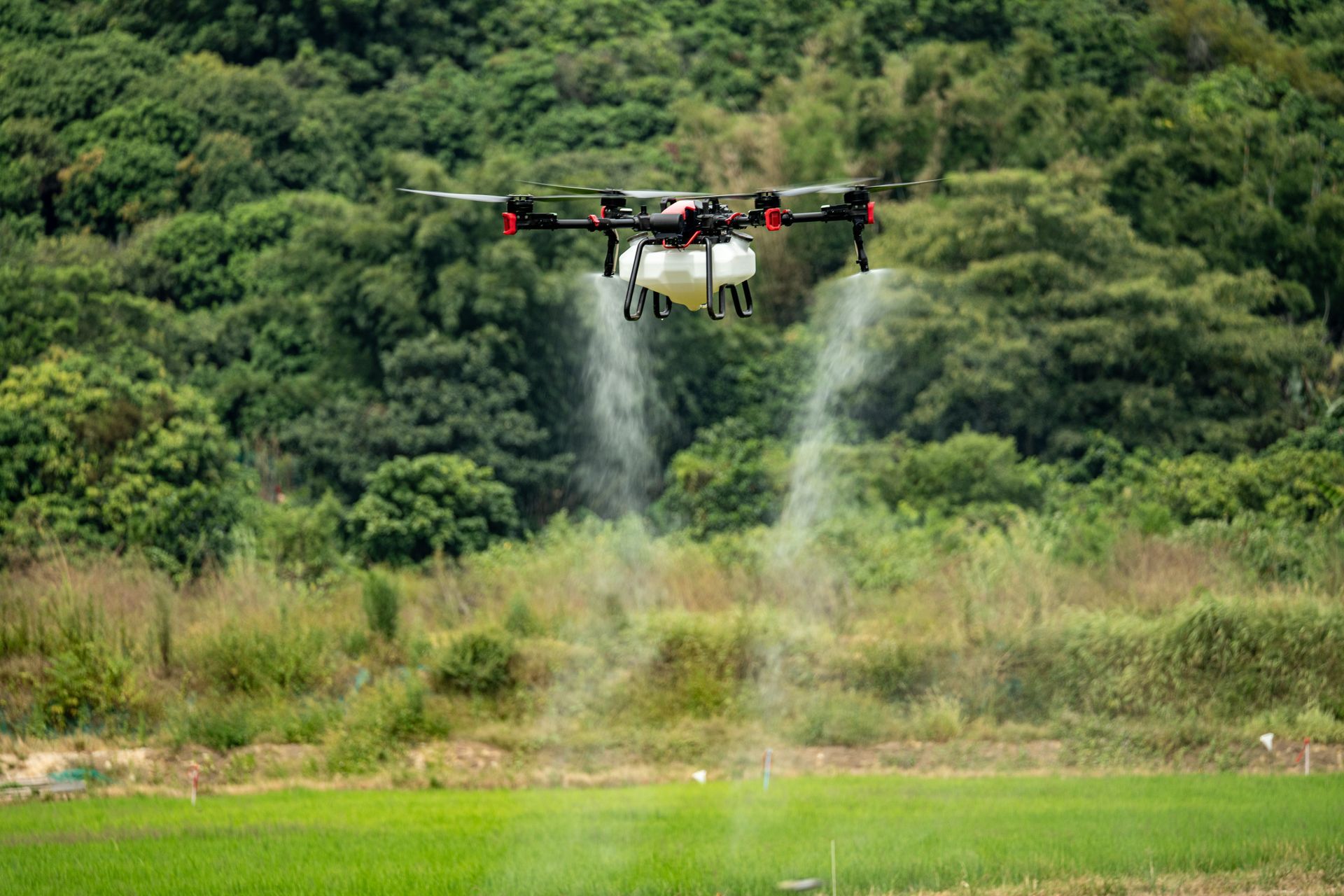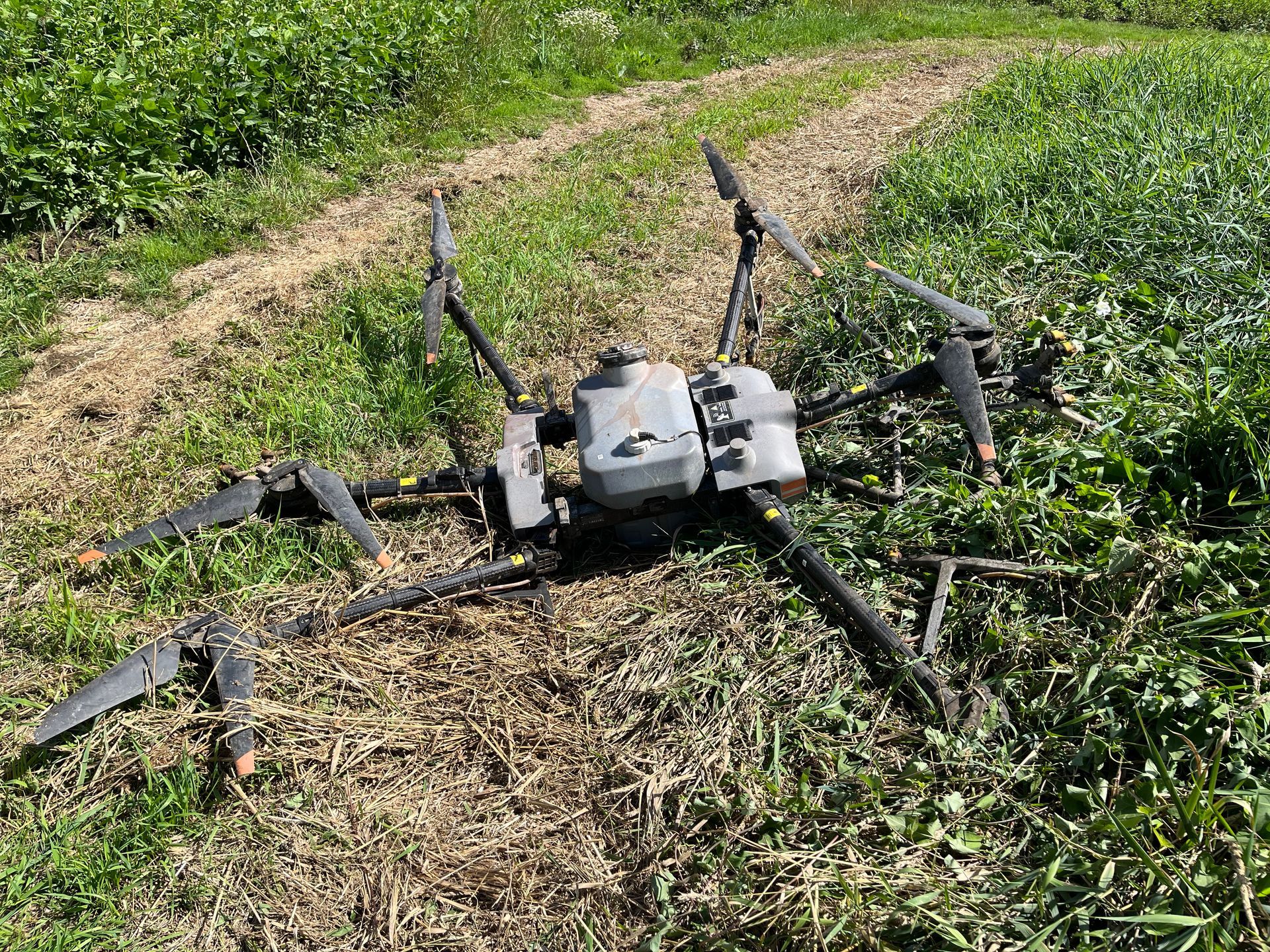RESOURCES
Planes, Rigs or Drones? Awkward Acres Require Precision Crop Spraying
Every producer has acres that prove to be a headache year after year. Whether they’re oddly shaped, near powerlines or trees, or are generally hard to access, awkward agriculture acres require more thoughtful crop spraying strategies.
Rantizo drone sprayers have enabled efficient and accurate application on acres that have proved to be a challenge for applicators like Ethan Noll, digital ag manager at Ag Partners in Northeast Kansas. Because of the success he’s seen working with Rantizo, he expects his drone spraying business to spray 10,000-plus acres by drone in 2023.
“I read about Rantizo in a magazine article and knew right away that drones could help with scouting and application on our smaller fields that have trees and powerlines,” says Noll, a former soil scientist and sales agronomist. “I don’t think I understood how impactful that decision would be.”
Efficiency over awkwardness
Noll says crop spraying with Rantizo products offers efficiencies on awkward acres in four ways:
- Creating universal accessibility and consistency across the entire field.
- Allowing planes and ground rigs to stick to acres they’re better at.
- Leveraging variable spraying for maximum yields with minimal resources.
- Conducting trials on small areas.
“I have a wheat grower who swears his record yields from the last two years are due to switching to drone spraying,” says Noll. “We can reach all the edges of the field to keep everything uniform in a way that is challenging for a rig or plane.”
Drones give applicators an opportunity to manage fields acre by acre instead of one solution for the entire field.
But maximizing efficiency doesn’t stop at drone application. When using the right tools on the right fields, a drone allows planes and ground rigs to stick to large, obstacle-free fields.
“Planes don’t like doing fields where there are a lot of trees or fewer acres. It’s just unsafe, and it takes more time to do the job than it’s really worth,” says Noll. “As far as a ground rig, if there are a lot of trees or obstacles, they’re more likely to damage their boom. If it’s hard to get to or if the field is too wet or roads are too muddy, it’s hard for a ground rig to complete.”
Noll reports another wheat customer who leveraged crop scouting services and found they only needed half of the field sprayed with Roundup. Crop spraying with a drone was targeted only to problem areas; the customer reported the field was just as clean as it would have been with a ground rig and with half the amount of chemical.
And leveraging drones for trials — which tend to be on smaller fields — is another smart way to maximize efficiency for any drone spraying business.
More customers, more acres
Noll and his team received the Mount Olympus Award from Rantizo in 2021 for spraying more than 2,000 acres by drone. In 2022, Noll reports the number increased to 5,000 and is slated to double again in 2023.
How is Ag Partners growing its drone spraying business so quickly?
“Producers have more awareness of drones these days, so we get a lot of customers just by word of mouth,” says Noll. “But we really get to show off when we lead demonstrations.”
The Ag Partners team leverages Rantizo services through demonstrations to producers, schools, FFA chapters, conservation districts, Extension specialists and more.
But is Noll’s team getting more business due to drone spraying effectiveness on awkward acres? He says yes.
“Of the 5,000 acres we’ve done in 2022, I’d estimate 3,000 of those probably wouldn’t have been done due to the challenges or would have had to been done with a less-efficient machine which means it needed to be pulled off of other acres.”
Flying drones isn’t the only way Ag Partners has maximized efficiency. They’ve curated a system where they use their own tank for chemicals and a generator to make their drones go farther.
Diverse spraying for specialty crops
Awkward acres aren’t only defined by field conditions or powerlines, either. Specialty crops and vines are perfect candidates to showcase a drone’s niche crop spraying abilities.
“We’ve sprayed watermelons, squash, pumpkins, bell peppers and cantaloupe,” says Noll. “You can’t drive a ground rig because you’d squash the produce, so these are acres that would have otherwise been sprayed by hand.” (Curious about rice spraying? Rantizo has that covered, too.)
Ponds are also in the awkward acre category due to the trees often around them and inaccessibility by ground rigs. Noll says he also works a lot of acres in Western Kansas with sagebrush that can make spraying difficult.
And a crop spraying job doesn’t end until the equipment is washed out. The cleaning process is faster with a drone.
“For me to flush the drone sprayer out, it takes 30 minutes,” says Noll. “Whereas flushing out a traditional sprayer can take two hours, meaning half a day could be spent just cleaning out a sprayer.”
Get in touch with the drone experts at Rantizo to see how drone spraying can elevate the performance of your awkward acres, increase profitability of your spraying outfit and take the headache out of spraying challenges.
The post Planes, Rigs or Drones? Awkward Acres Require Precision Crop Spraying appeared first on Rantizo.
share this
past blog posts
Related blogs

Contact US
How can we reach you?
Keep up with all the latest Rantizo news including: product releases, upcoming events, drone spraying industry tips, and more!



